Get PeakVisor App
Sign In
Search by GPS coordinates
- Latitude
- ° ' ''
- Longitude
- ° ' ''
- Units of Length

Yes
Cancel
Share ×

Scan the QR code and open PeakVisor on your phone
❤ Wishlist ×
Choose
Delete
Along the sunny southwest coast of Taiwan lies the Jianshan Coastal Reserve (尖山沿海保護區). The reserve contains 4 named peaks. Wen Zhao Shan (蚊罩山) is the highest mountain in the reserve with an elevation of 704 m (2,310 ft). The most prominent peak in the reserve is Jianshan (尖山), at 126 m (413 ft) in elevation and with 70 m (230 ft) of prominence.
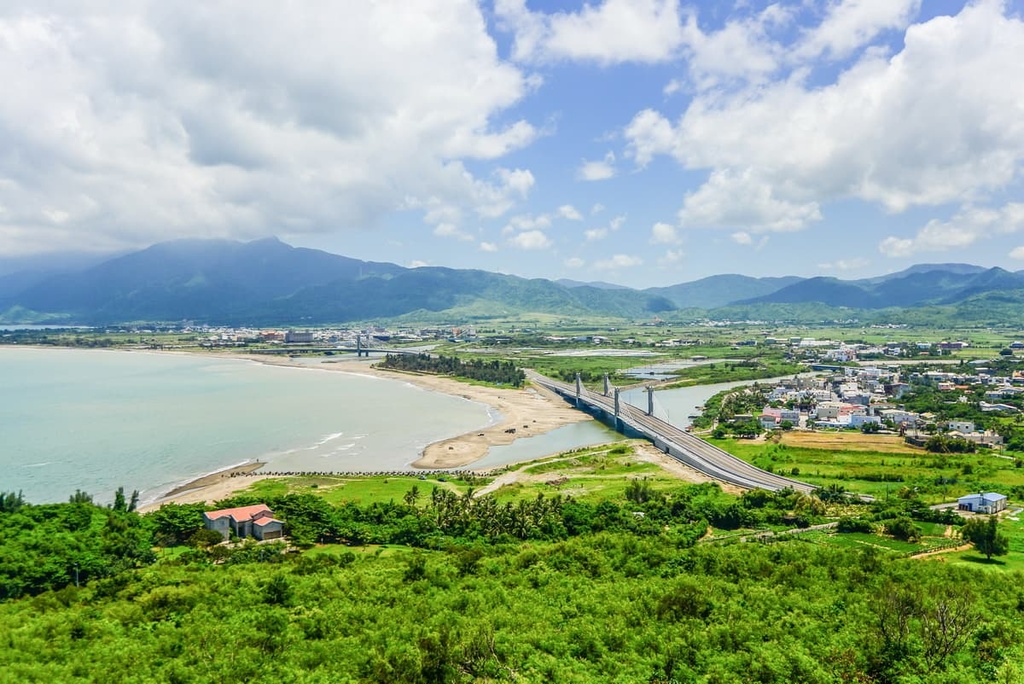
Jianshan Coastal Reserve is located along the shores of Checheng Township (車城鄉) in Pingtung County (屏東縣) on Taiwan's southernmost Hengchun Peninsula. This coastal strip of land has an area of 1,740 ha (4,300 ac).
The reserve begins at Lilongshan (里龍山) in the north and extends past Wen Zhou Shan to the east before terminating in the south at the border of Kenting National Park (墾丁國家公園). The western boundaries of Jianshan Coastal Reserve stretch into the waters of the Taiwan Strait (臺灣海峽).
The southern regions of Taiwan tend to be less rainy and drier than the northern regions. Approximately 2,200 mm (86 in) of precipitation falls in the area each year, primarily between May and October. Very few rain showers occur between the dry season of November to April. Indeed, notoriously fierce typhoons pummel the land, heralding heavy storms and ferocious winds from July to September.
The topography of the Jianshan Coastal Reserve is relatively flat. As the reserve rests right on the coast, the sea winds forcefully blow across the area. Meanwhile, coral reef belts, sand dunes, and the unique marine ecology between the coastal stretch of Jianshan and Haikou are the primary features of the Jianshan Coastal Reserve.
Beside Wen Zhao Shan and Jian Shan, the other two peaks in the reserve are Haikou Shan (海口山) and Gui Shan (龜山). Gui Shan translates to ‘Turtle Mountain’ due to the fact that it looks like a turtle peeking out of its shell. Also, Wen Zhao Shan translates to 'Mosquito Mountain' due to the heavy presence of mosquitos on peak.
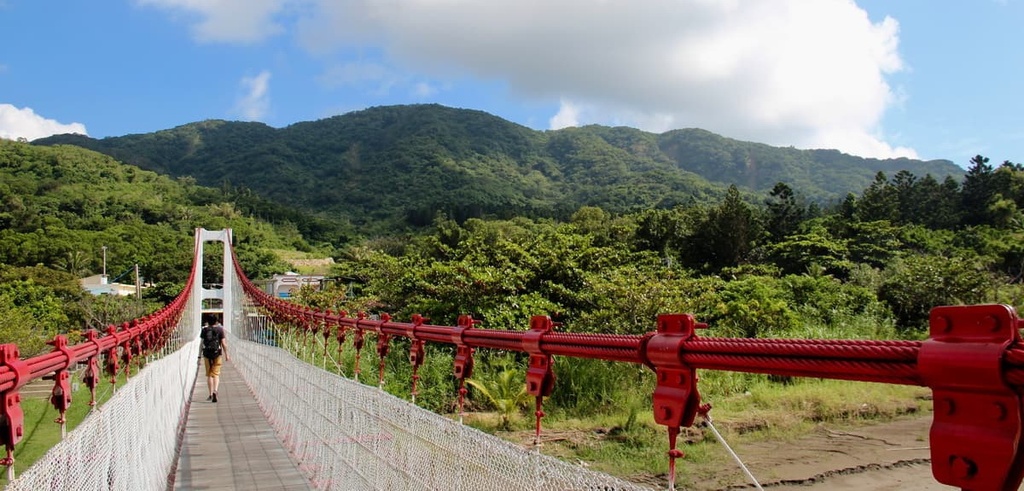
Areas of interest surrounding the Jianshan Coastal Reserve are Kenting National Park in the south and Shoushan National Nature Park (壽山國家自然公園) in the north. Shuangliu National Forest Recreation Area (雙流國家森林遊樂區) is also located to the east.
The southern hills of Jianshan Coastal Reserve are an extension of the Central Mountain Range (中央山脈). While the peaks of the Central Mountain Range are notoriously steep and lofty, the hills of Jianshan Coastal Reserve are not nearly as rugged.
The flat hills of Jianshan Nature Reserve were once underwater. As the coastal land uplifted, these hills gradually rose from the seawater. Thus, the coastal hills of the reserve primarily feature exposed coral reefs consisting of Hengchun limestone layers from the mid to late Pleistocene epoch.
The rivers running through the reserve flow westward into the Taiwan Strait. This movement has resulted in the formation of widespread alluvial deposits that have accumulated over time to form alluvial fans.
There are also large outcroppings of igneous rock in the reserve, which differ considerably from the limestone coral reefs further to the south. Along the coast of Jianshan, alternating layers of igneous rocks and mudstone line the ocean.

The forested areas of Jianshan Coastal Reserve are subjected to strong winds and intense heat. These forest areas are mainly present on the mountain slopes in the eastern region of the reserve, near Wen Zhao Shan.
Mountain flowers, such as rhododendron and acacia, bloom in the spring and summer months. The dense shrubbery of Dwarf lilyturf (Ophiopogon japonicus) infiltrates the landscape of the mountains. Vast grasslands of Pseudosasa japonica bamboo span the gentle terrain of Jianshan Nature Coastal Reserve.
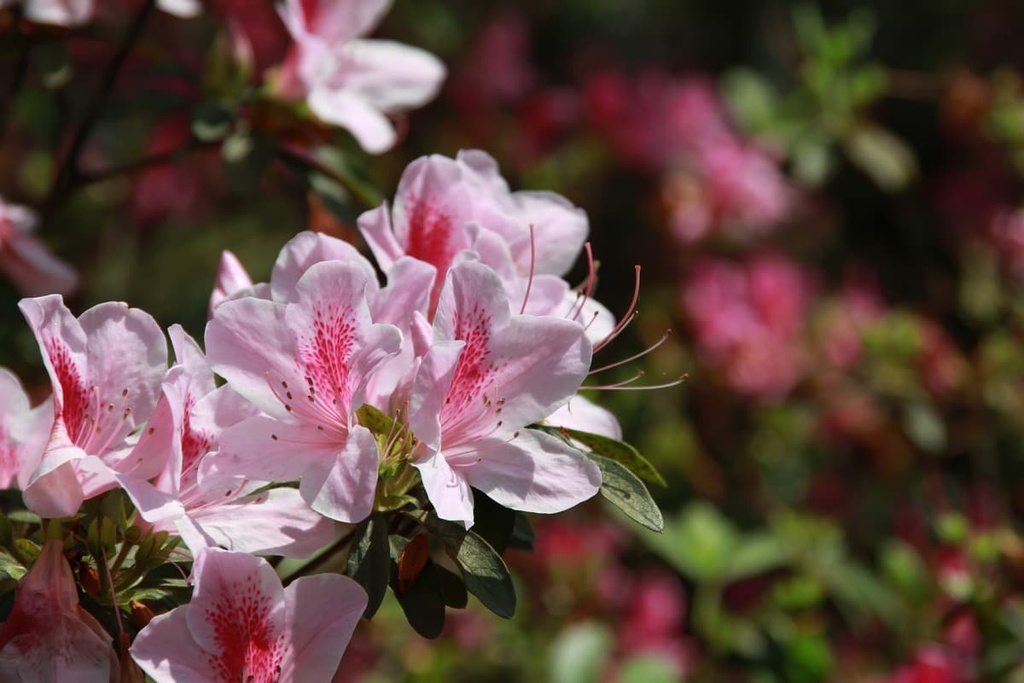
The underwater plant life in the region is compelling and many unique plants flourish in the waters of the reserve. As the depth of the waters just off the coast is about 7 metres (23 ft), this region is the perfect habitat for Sargassum algae to thrive.
Thus, ten species of Sargassum algae occupy the coral reefs around the reserve. Additionally, six species of monocotyledonous sea plants sprout in the sea, such as Thalassia.
Meanwhile, the wildlife of the reserve consists of some fascinating species. For example, damselfish, gilt head bream, and gold spot sea bream inhabit the coral reef.
Furthermore, the yellow-tailed damselfish is found in the waters of the Jianshan Coastal Reserve. This is a rare place to find them, too, as their habitual waters are near the equator in the Indian and Pacific oceans.
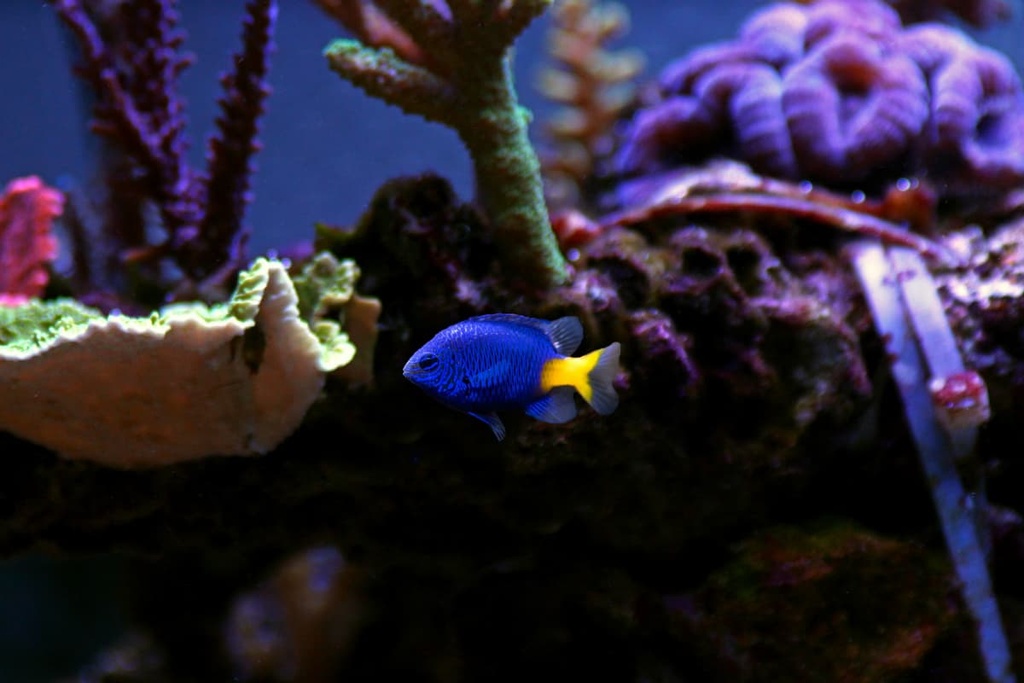
In addition to marine life, there is also a significant bird presence in the reserve. A total of 66 bird species have been recorded in the small area of this reserve. Of them, the endemic wotou weng (烏頭翁), also known as a Taiwanese bulbul, is among the most prominent.
The region around the Jianshan Coastal Reserve has a long history of human inhabitation. In more recent centuries, the region has been known for its harsh waters and many shipwrecks. In particular, in 1871, there was an incident involving shipwrecked Ryukyu sailors and the Paiwan Tribe, who have lived in the area since time immemorial.
The Paiwan Tribe was not particularly welcoming to foreigners, and upon finding the stranded sailors, a fight ensued and 54 members of the 66 men crew were killed.
The news of these sailors’ deaths sent shockwaves in Japan. As Taiwan was under control of the Qing dynasty, the Japanese government requested the Qing dynasty to punish the Paiwan people for the incident.
The Japanese grew increasingly frustrated as no punitive measures were taken against the Paiwan by the Qing dynasty, who insisted that the Taiwan tribes fell out of their area of jurisdiction.

Thus, in 1974 the Japanese organised a military force of 2,000 fighters to take revenge on the Paiwan people. A bloody massacre ensued on both sides of the altercation. The Qing dynasty eventually compensated Japan for the 54 slain Ryukyuan sailors and the cost of sailing to Taiwan to seek retaliation.
However, it was from this ordeal that the Japanese started to question the control and influence that China held over Taiwan. Thus, the seed was sown for the early phases of planning for the Japanese Occupation Era that took place from 1895 to 1945.
In more recent years, the region around Jianshan Coastal Reserve was protected in order to preserve the fragile marine ecosystems around the southernmost parts of Taiwan.
The Jianshan Coastal Reserve consists of a diverse landscape of sandy beaches, coastal hills, and marine life. The reserve features an array of natural attractions, so there is something to interest everyone in the park.
While Wen Zhao Shan is not the loftiest peak on Taiwan, the region’s intense wind, severe summer heat, and steep trails make it a challenging summit to hike. As its name suggests, Wen Zhao Shan is a magnet for mosquitoes that thrive in hot weather; thus, swarms of mosquitoes are known to pester hikers as they climb the peak.
On the mountain, there are large areas of dense forests that feature evergreen broadleaf lipa trees (Dendrocnide meyeniana) and banyan trees. The trail is mainly sheltered, a welcome respite to the blistering southern Taiwan sun, especially in summer.
Along the hike, pope assists are connected to the crumbling sandy mountain slopes. Some slopes have a steepness of 70°. Hikers should be careful to watch out for the lipa tree's sharp edged leaves, which has garnered the not-so-nice nickname 'biting dog plant.’
A forest of bamboo covers the rampant summit of Wen Zhao Shan, which obscures most views. However, once hikers pass through the dense grass, they can admire the gloriously sunny and sandy shores with various shades of aquamarine sparkling water lapping on the southern Taiwan coastline.
From the summit, the tropical landscape of Kenting National Park's beaches and forests are distinguishable to the south. Jianshan is visible to the west, too, and the dune desert of Haikou can be spotted further south along the coastline.
Gui Shan is located in both Jianshan Coastal Reserve and Kenting National Park. One of the advantages of climbing this scenic hill is that most visitors to Kenting National Park head to it white sandy beaches, tropical forests, and stalactite caves; thus, the trail to Gui Shan is usually quiet.

While the hill is not high, the seaside views from this coastal hill are astounding. Hikers can note the views of the Hengchun Peninsula to the south, as well as the views of the coastline to the north.
In addition to the many scenic viewpoints on Gui Shan, there are a number of important historic sites. For example, relics of a military station with secret military tunnels were established at the base of the mountain. The Japanese once used this military base as a fortress when waging war against the Paiwan Tribe in the 1870s.
Due to its coastal location, the topography of Gui Shan is primarily exposed and uplifted coral reef. The mountain is also a magnet for butterflies, adding a touch of whimsical colour and elegance to the mountain path. In a matter of ten minutes, hikers reach the summit of Gui Shan, where the calming endless views of seagreen waters stretch to the horizon.

Along the sandy shores of Haikou Village, the striking Haikou Desert (海口沙漠) extends along the southern shoreline of Jianshan Coastal Reserve. The fine golden sandy desert extends for some 1,800 metres (5,905 ft) even though it’s only 20 metres (66 ft) wide.
The forceful northeast monsoon winds form patterned sand work on the shores of Haikou. During the northeast monsoon months, the Haikou Desert is called the ‘Little Sahara Desert’ as the yellow sand particles swirl and hang in the air like a thin sandy sheet. As this area is significantly windy, the landscape is constantly changing. However, two gigantic dunes measuring a height of 15 metres (49 ft) stand unchanged despite the weather conditions.
While the landscape is sandy, plants do flourish in this area. A forest of Casuarina equisetifolia runs along the edges of the desert, forming a windbreak. Along the beach, saddle vine, Casuarina trees, and ginger thrive in this sandy environment, anchoring the sand in place in the process.
While Jianshan is relatively low in elevation, the jagged rock and steep gradients on its slopes create a challenging climb. Additionally, the summit of Jianshan looks like the tip of a wizard’s hat, highlighting the peak’s prominence.
During this trek, rope assists help hikers to crawl up steep slopes. The views from above are graciously rewarding as the endless stretch of seawater ripples into the horizon. In particular, this view is most beautiful at dawn and dusk; however, descending the peak after sunset isn’t ideal.
The largest marine biology museum in Taiwan is located in the Jianshan Coastal Reserve. As the National Museum of Marine Biology (國立海洋生物博物館) is conveniently situated near the rich marine ecological waters of the Jianshan coastline, the museum houses an intriguing assortment of fish species.

This three-storey aquarium is divided into subgroups of the Taiwan Waters Pavilion, World Waters Pavilion, and Coral Kingdom Pavilion. It once accommodated the longest underwater aquarium tunnel at 81 metres (265 ft) in length; however, this title now belongs to the Shanghai Ocean Museum.
Visitors can watch penguins, white whales, and sharks freely swimming through the water at the aquarium. This unique tunnel gives you the chance to witness these animals in their natural habitat while simultaneously observing the underwater plant life.
The Mundan Village Incident Memorial Park is a memorial that was created to initially honor the fallen Japanese soldiers of the region’s 1871 shipwreck.
However, the Japanese erected the memorial stone during the Japanese Occupation Era of Taiwan and they did not initially include the Paiwan tribal members who also died in the incident. Once Taiwan regained control of the island, the Taiwanese government amended the memorial to also honor the slain Paiwan people.
A trip to the memorial park, while sad, is both historical and educational. The Mudan Incident is a significant historical moment in southern Taiwan’s history as it prompted Japan to release the Ryukyu Islands from its reign.
In addition to this, the memorial is located on the slope of Shimu Shan (石門山) where views of the surrounding landscape of extensive onion farms of the Checheng Township are vast and expansive.

Also, as the members of the Paiwan Tribe continue to live in the region. So, during a visit to the memorial, you can also enjoy some Paiwan delicacies, such as onion soup, onion cakes, and Hongren duck eggs.
Sichongxi Hot Springs (四重溪溫泉) forms part of the four major hot springs in Taiwan. The other three are Yangmingshan Hot Springs (陽明山溫泉), Beitou Hot Springs (北投溫泉), and Guanziling Hot Springs (關子嶺溫泉).
One of the main attractions of Sichongxi Hot Springs is its natural setting, as it is remotely situated in the valley of the Sichong Riverbank; thus, lush hills and gurgling streams encircle the landscape in the quietness of nature.
The thermal spring waters vary between 122 to 176°F (50 to 80°C) in temperature. The waters themselves are also high in alkaline sodium bicarbonate. The clear and odourless mineral bath stimulates blood circulation, reduces stress, and ease muscle pain.
In addition to the medical benefits of the hot spring, visitors can stroll on a scenic butterfly trail that loops its course around the verdant valley. Plus, visitors can enjoy a Paiwan delicacy, the Hongren duck egg, in their free time.
The Jianshan Coastal Reserve is within close proximity to two of southern Taiwan’s major urban areas. Visitors can either stay in Taiwan’s second-largest city, Kaohsiung, or they can opt to stay in the Taiwanese township of Hengchun (恒春镇).
The southern tropical sunshine and year-round warm weather give laid back vibes to this enormous city. In Kaohsiung City, one can notice the more relaxed atmosphere of Taiwan's southern hub.
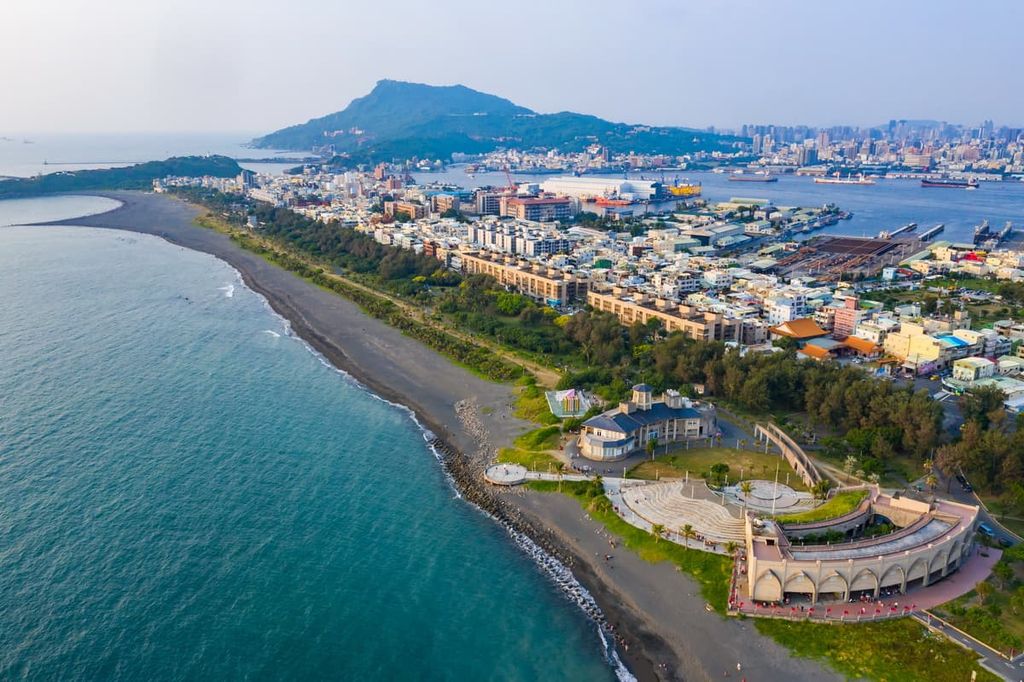
Arguably the most prominent landmark in Kaohsiung, Lotus Pond is a quiet, serene waterhole in the busy district of Zouying where three animated and colourful pavilions perch on the water's edge.
The Dragon and Tiger Pagodas are the most popular and frequented of these pavilions as they are the closest and most accessible from the entrance point of Lotus Pond.
To visit the pavilions, visitors must enter through the mouth of a dragon or tiger. A series of steps lead to the seven-tiered floors of the pagoda, from where visitors can spot Kaohsiung City's Gui Shan (龜山) looming overhead.
The nearby Shoushan National Nature Park consists of coastal hills, a remote forest of Banyan trees, and impressive limestone caves. This mountainous forest boasts a broad population of monkeys. There are also some much-loved hiking trails in the park as the views of both Kaohsiung City's skyline and the coastal waters from the park are hard to beat.
Additionally, 85 Sky Tower is Kaohsiung's equivalent of the Taipei 101. The Taiwanese architect C.Y. Lee designed the 85 Sky Tower to resemble the Chinese character gao (高), which means ‘tall.’
During its construction from 1997 to 2003, it was the tallest building in Taiwan at 347.5 metres (1,140 ft) in height. That title now rests with Taipei 101. Visitors can check out the viewing deck on the 74th floor, the highest place to watch Kaohsiung's bustling southern port city.
Once a gritty washed-up area on the river banks, Kaohsiung authorities have worked their magic to transform the Love River marsh into a romantic and beautiful spot.
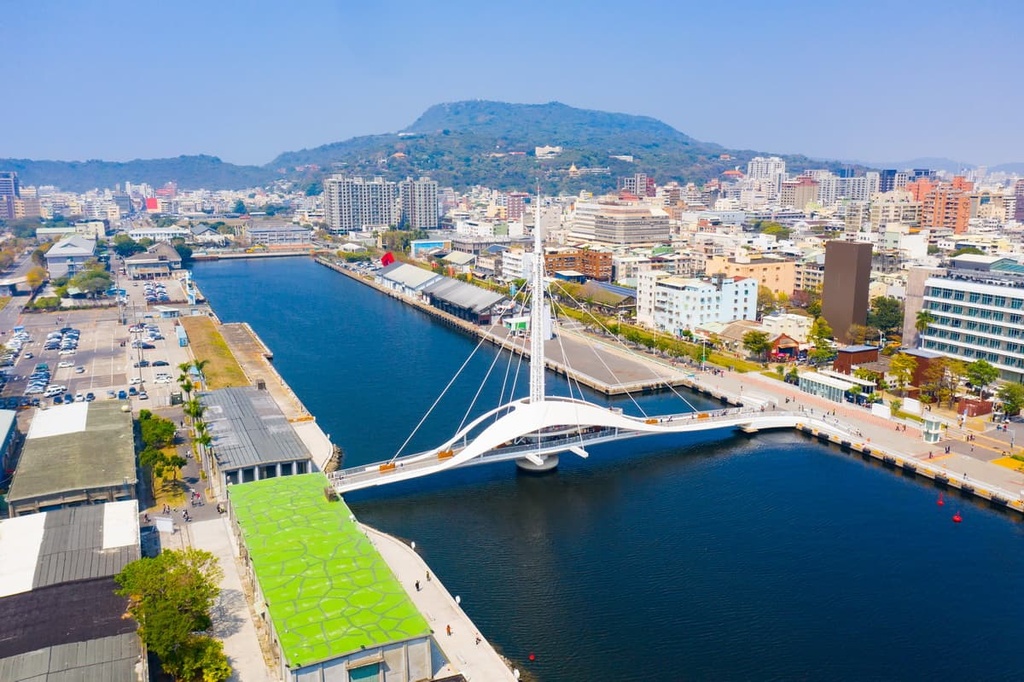
The area now attracts couples who want to soak up the charming aura of pastel flowers, the foliage of greenery, and blue lighting at night. A wooden boardwalk lines the river's edge for visitors to wander, where the city lights reflect on the water's surface, leading to the Taiwan Strait's expansive sea.
As Hengchun is the southernmost township in Taiwan, it is not as well connected to the other part of the island as the more populous cities along Taiwan’s west coast. While the remote aspect may sound like a disadvantage, the flip side is that tourism hasn’t stripped this historic city of its authenticity. Indeed, visitors to Hengchun love this cultural gem.
One of Hengchun's best features is its old town. Here, visitors can find traditional Chinese medicine, ghost money, and incense in historic buildings. In addition to this, the old city gates still stand intact in Hengchun. Visitors can witness the city from above while striding along the city walls of the West Gate.
Hengchun Night Market is renowned for its unique character. Unlike some highly visited night markets that cater to tourists, the street food and goods here pander to the locals' tastes.
The pro tip here is to queue in the long lines to savour some delicious local specialities. Donggang ice, fried sweet potato balls, fried crabs, and fried crispy tofu are well-known and much-loved dishes served at the Hengchun Night Market.
Another reason to visit Hengchun is to observe the famous annual Hengchun Pole Climb. During the event, teams race to climb a 12-metre (39 ft) pole layered in grease. This strange competition stemmed from the past when Hengchun was one of Taiwan's wealthiest cities.
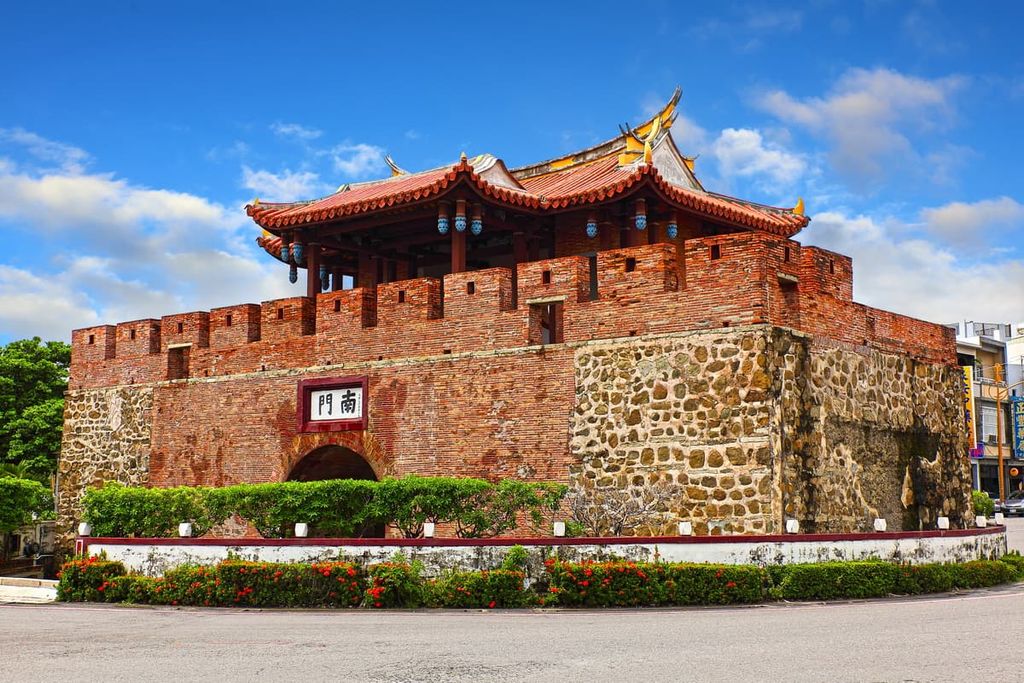
Unsure how to distribute their charity to the poor, the elite rich devised the bizarre pole climbing race and bestowed their offerings on the winners. Today, this event is purely for fun, and teams from around Taiwan head to Hengchun each year to compete in this race.
One of the highlights of Hengchun is its proximity to Kenting National Park. A mere 10 minute drive lands you in the heart of the beachy, tropical paradise of Kenting. There, visitors have abundant options for outdoor activities.

For example, the tropical forests of the park are excellent for hiking and the park’s many caves are worth exploring. In the park, visitors can partake in water activities like diving, snorkelling, boating, swimming, and fishing.
From the major cities of Taipei, Taoyuan, Hsinchu, Taichung, Chiayi, and Tainan, take the Taiwan High-Speed Raid (HSR) or local express train (TRA) to Kaohsiung City.
From here, board the 9188 or 9117 bus. Alight at Fangliao where you will change to the 9189 bus that drops you off at the National Museum of Marine Biology in the Jianshan Coastal Reserve.
Another option is to take the TRA train from Kaohsiung Main Station to Fanglio Station, then board the 9189 bus to the Jianshan Coastal Reserve. Alternatively, you can hire a car or scooter from Kaohsiung City. The journey to Jianshan Coastal Reserve is 95 km (59 miles) long.
Explore Jianshan Coastal Reserve with the PeakVisor 3D Map and identify its summits.








